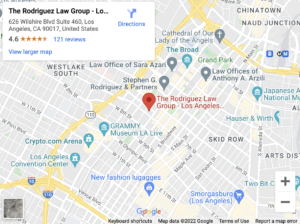What is Shock Probation? Understand it more
California believes that rehabilitation is an important component of the criminal justice system. Rehabilitation focuses on helping you get on the right track in life, rather than just punishing you for breaking the law. Probation plays a large role in the rehabilitative process.
As part of probation, you can be required to attend counseling, abstain from drug and alcohol use, find gainful employment, and give back to your community by completing service hours. Probation focuses more on helping you overcome your criminal past than punishing you for it.
Understanding Shock Probation
Shock probation has been used by many states across the country for more than six decades. Each state has its own regulations and specific ways in which shock probation is implemented. Despite these differences, studies have shown that using shock probation is positively correlated with a reduction in criminal behavior. Put another way, shock probation has proven to help get young offenders back on the right track and stay away from crime.
Shock probation is typically used in cases involving:
- Relatively minor crimes
- First-time offenders, and
- Juvenile offenders.
However, just because you’re young or a first-time offender doesn’t mean that a court will consider shock probation. Judges have the discretion to use this penalty as they see fit. As a result, there will be a careful review of all of the factors in your case. Shock probation will only be used if the court believes that:
- You are a good candidate for rehabilitation, and
- A dose of reality from a short stint behind bars would be beneficial.
Is Shock Probation a Good Thing?
If probation is such a great rehabilitative tool, is it really necessary to subject young offenders to the harsh realities of prison? This is a question that’s often posed by critics of shock probation. Critics also argue that incarcerating a young person for any amount of time can backfire.
Incarceration can cause extreme emotional distress and tear families apart. Young, impressionable defendants can easily fall in with the wrong crowd and learn negative behavior. All of these things could potentially increase, rather than decrease, the likelihood of future criminal behavior.
However, there are many proven benefits of shock probation. First, getting a glimpse into the California prison system can be quite a shock to the system. Young offenders witness the consequences of their actions and, more often than not, want to avoid them at all costs. Additionally, shock probation actually helps to reduce the amount of time defendants spend behind bars for relatively minor and non-violent crimes. This can limit contact with negative influences and serve as a warning, rather than a long-term punishment.
Finally, shock probation helps to reserve incarceration for only the most serious offenses. Putting someone behind bars is a serious penalty and should only be used when it is truly necessary. Rehabilitative measures, including shock probation, have proven to be much more useful to defendants and society.
How is Shock Probation Different from Split Sentencing?
In California, courts have long embraced split sentencing. This is similar to, but different from, shock probation.
Shock Probation: Sam is found guilty of petty theft. He’s sentenced to 6 months in a Los Angeles County jail. Once Sam has served a fraction of his sentence and witnessed the realities of imprisonment, he can file a petition for shock probation. This basically asks a court to suspend the rest of his sentence in favor of probation. If his request is granted, Sam can complete rehabilitative measures rather than spending the rest of his sentence behind bars.
Split Sentencing: Joe is convicted for possession of a controlled substance. His sentence includes both imprisonment and probation. He’ll be required to spend one month behind bars before he can be released under court supervision. Once his one-month term is completed, he’ll automatically be released to complete probation.
The primary difference between shock probation and split sentencing involves the amount of time a defendant spends behind bars. With shock probation, the length of a sentence isn’t predetermined. When split sentencing is used, however, the amount of time a defendant will be required to spend in jail is set in stone at the beginning.
Have you been arrested for a crime in Los Angeles? Contact The Rodriguez Law Group Los Angeles Criminal Defense Attorneys for help with your criminal defense. A strong defense can help to protect you from many of the potential consequences of your alleged crime. Our attorneys are here to help you fight for your future. Call our criminal defense team to schedule your free case assessment today.
To learn more, call our Los Angeles criminal defense law firm at 213-995-6767 or visit our contact us page to send us an email.


